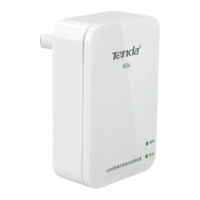78
mustsetallAps’SSIDtothesamename.
Wired Equivalent Privacy (WEP) is a security algorithm for IEEE
802.11 wireless networks with the intention to provide data
confidentiality comparable to that of a traditional wired
network .WEP, recognizable by the key of 10 or 26 hexadecimal
digits, is widely in use. WEP uses the stre
am cipher RC4 for
confidentiality,[5]andtheCRC‐32checksumforintegrity.Standard
64‐bit WEP uses a 40‐bit key (also known as WEP‐40), which is
concatenatedwitha24‐bitinitializationvector(IV)toformtheRC4
key. The extended 128‐bit WEP protocol uses a 104‐bit key size
(WE
P‐104). A 152‐bit WEP is available from some vendors. Static
WEP encryption allows to include 4 WEPKeyswhile dynamic WEP
encryptionchangesWEPkeydynamically.
WPA/WPA2
The WPA protocol implements the majority of the IEEE 802.11i
standard. It enhances data enc
ryption through the Temporal Key
IntegrityProtocol(TKIP)whichisa128‐bitper‐packetkey,meaning
thatit dynamically generatesanewkey foreachpacket.WPAalso
includesamessageintegritycheckfeaturetopreventdatapackets
from being hampered with. Only authorized network users can
access the wireless network.
The late
r WPA2 protocol features compliance with the full IEEE
802.11i standard and uses Advanced Encryption Standard (AES) in
addition to TKIP encryption protocol to guarantee better security
thanthatprovidedbyWEPorWPA.Currently,WPAissupportedby

